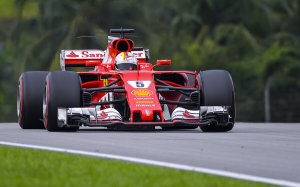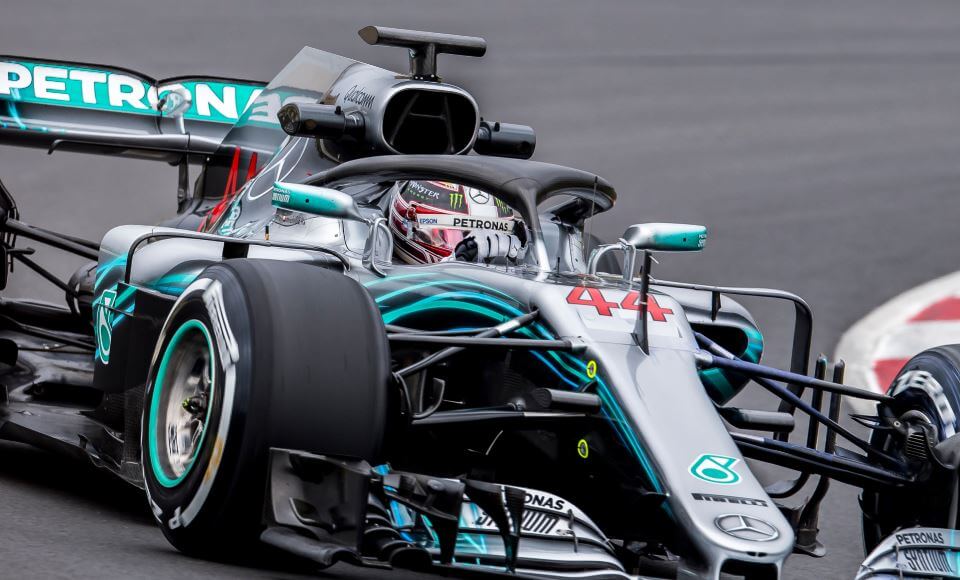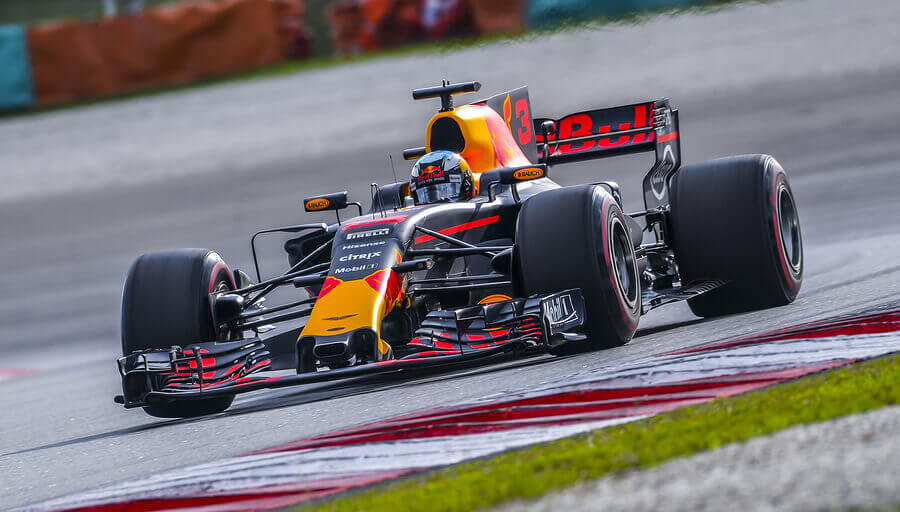The Hybrid Era in F1: All you Need to Know

If technological advances are involved, surely Formula 1 doesn’t have any discipline that can compete with it? This isn’t only when compared against the automobile field but in the entire sports world. For some years, we’ve lived in the hybrid era in F1. Do you understand what this new historical stage of the highest category of motorsport means? Here’s everything you need to know about it.
What jumpstarted the hybrid era in F1
As with other sports phenomena, the hybrid era in F1 was triggered by the economic factor.
For starters, we should consider that the engines used until this time consumed almost 90 liters of fuel per 100 kilometers. This is a lot of fuel when compared to the distance traveled!
Because of this, F1 teams decided to modernize the power units of their cars. This modernization also followed the direction of many governments and companies towards the use of more sustainable energies. In the following lines, we’ll explore how the arrival of electric power to Formula 1 took place.
Predecessors of the change
The sound that’s so characteristic and that every motorsports fan will remember was produced by the V10 engines. These types of engines were used in Formula 1 cars from 1989 to 2005. This engine was the main reason that made Formula 1 cars the fastest vehicles in the world. On the other hand, they sounded fantastic!
In relation to their technical qualities, V10 engines reached an impressive 19,000 revolutions per minute. In turn, this allowed them to generate between 900 and 950 horsepower. All of this with a weight close to 90 kilos!
From 2006 to 2013, V8 engines with a cap of 18 thousand RPM were preferred over V10. Although they had less power – about 750 HP – they consumed almost 20 percent less fuel than the previous ones.
Kinetic Energy Recovery System: beginnings of the hybrid era in F1
The famous KERS, AKA the regenerative brake, was introduced in 2009. The Kinetic Energy Recovery was the first step towards a new stage of the highest category of motor racing. Its operation is simple: basically, it stores the energy generated by the braking of the car so that the driver applies it at his discretion to gain speed during the ride.

In the beginning, there were plenty of discussions. The teams claimed that, although KERS was very helpful in the fastest circuits, its weight represented a burden on slower stages, such as the Monaco GP. Therefore, many teams chose not to use it in 2010. Nevertheless, it returned to Formula 1 in 2011.
The final arrival of the hybrids
The year 2014 was the turning point for the adoption of hybrid technology in Formula 1. With a world that was oriented towards responsible and sustainable consumption, the cars incorporated the most complex and expensive engines in the world.
As of 2020, the engines that are currently used – now called power units – are V6 and have turbo power. These new engines are called ‘hybrids’ because, in addition to having an internal combustion part, they use electrical energy to boost themselves.
These new engine models are much more efficient than the previous ones, although they still need fuel to work. Consumption dropped to 34 liters per 100 kilometers traveled. That’s a drastic change!
The speed hasn’t been reduced despite this dramatic change. In fact, although the limit is 15,000 RPM, the cars are capable of producing 950 horsepower. From these, about 150 come from the electrical device.
Unfortunately, the roaring sound so loved by fans was almost forgotten, since the new engines are much more serene than the previous ones. For many, this is a flaw that supporters will never forgive, no matter how beneficial to the environment the new change might be.
The first years of the hybrid era
As mentioned, the new engines used in this category are extremely expensive. For this reason, and also for other issues related to the development of reliable and secure power units, there’s been a huge gap between the teams due to having different engines.

Mercedes has been the undisputed leader in the category since 2014. Only Red Bull and Ferrari have been able to keep up, and only to a certain extent. Of the first one hundred races of the hybrid era, 74 remained in the hands of the German brand, while those of the Ferrari won 14 and Red Bull, which dominated from 2010 to 2013, barely won 12.
These results indicate that the idea of reducing predictability in the championships hasn’t paid off. Also, the technical problems suffered by the other teams, even as powerful as Honda, are not the best invitation for new brands to join the category to promote their new technologies.
In summary, the last three years have produced unprecedented advances in the technology of racing cars. In this light, this has resulted in an almost doubled energy efficiency in relation to the V8 engines that were used before but entails less fair competition. What do you think of the hybrid era in F1? Has this category lost its distinctive essence?
If technological advances are involved, surely Formula 1 doesn’t have any discipline that can compete with it? This isn’t only when compared against the automobile field but in the entire sports world. For some years, we’ve lived in the hybrid era in F1. Do you understand what this new historical stage of the highest category of motorsport means? Here’s everything you need to know about it.
What jumpstarted the hybrid era in F1
As with other sports phenomena, the hybrid era in F1 was triggered by the economic factor.
For starters, we should consider that the engines used until this time consumed almost 90 liters of fuel per 100 kilometers. This is a lot of fuel when compared to the distance traveled!
Because of this, F1 teams decided to modernize the power units of their cars. This modernization also followed the direction of many governments and companies towards the use of more sustainable energies. In the following lines, we’ll explore how the arrival of electric power to Formula 1 took place.
Predecessors of the change
The sound that’s so characteristic and that every motorsports fan will remember was produced by the V10 engines. These types of engines were used in Formula 1 cars from 1989 to 2005. This engine was the main reason that made Formula 1 cars the fastest vehicles in the world. On the other hand, they sounded fantastic!
In relation to their technical qualities, V10 engines reached an impressive 19,000 revolutions per minute. In turn, this allowed them to generate between 900 and 950 horsepower. All of this with a weight close to 90 kilos!
From 2006 to 2013, V8 engines with a cap of 18 thousand RPM were preferred over V10. Although they had less power – about 750 HP – they consumed almost 20 percent less fuel than the previous ones.
Kinetic Energy Recovery System: beginnings of the hybrid era in F1
The famous KERS, AKA the regenerative brake, was introduced in 2009. The Kinetic Energy Recovery was the first step towards a new stage of the highest category of motor racing. Its operation is simple: basically, it stores the energy generated by the braking of the car so that the driver applies it at his discretion to gain speed during the ride.

In the beginning, there were plenty of discussions. The teams claimed that, although KERS was very helpful in the fastest circuits, its weight represented a burden on slower stages, such as the Monaco GP. Therefore, many teams chose not to use it in 2010. Nevertheless, it returned to Formula 1 in 2011.
The final arrival of the hybrids
The year 2014 was the turning point for the adoption of hybrid technology in Formula 1. With a world that was oriented towards responsible and sustainable consumption, the cars incorporated the most complex and expensive engines in the world.
As of 2020, the engines that are currently used – now called power units – are V6 and have turbo power. These new engines are called ‘hybrids’ because, in addition to having an internal combustion part, they use electrical energy to boost themselves.
These new engine models are much more efficient than the previous ones, although they still need fuel to work. Consumption dropped to 34 liters per 100 kilometers traveled. That’s a drastic change!
The speed hasn’t been reduced despite this dramatic change. In fact, although the limit is 15,000 RPM, the cars are capable of producing 950 horsepower. From these, about 150 come from the electrical device.
Unfortunately, the roaring sound so loved by fans was almost forgotten, since the new engines are much more serene than the previous ones. For many, this is a flaw that supporters will never forgive, no matter how beneficial to the environment the new change might be.
The first years of the hybrid era
As mentioned, the new engines used in this category are extremely expensive. For this reason, and also for other issues related to the development of reliable and secure power units, there’s been a huge gap between the teams due to having different engines.

Mercedes has been the undisputed leader in the category since 2014. Only Red Bull and Ferrari have been able to keep up, and only to a certain extent. Of the first one hundred races of the hybrid era, 74 remained in the hands of the German brand, while those of the Ferrari won 14 and Red Bull, which dominated from 2010 to 2013, barely won 12.
These results indicate that the idea of reducing predictability in the championships hasn’t paid off. Also, the technical problems suffered by the other teams, even as powerful as Honda, are not the best invitation for new brands to join the category to promote their new technologies.
In summary, the last three years have produced unprecedented advances in the technology of racing cars. In this light, this has resulted in an almost doubled energy efficiency in relation to the V8 engines that were used before but entails less fair competition. What do you think of the hybrid era in F1? Has this category lost its distinctive essence?
All cited sources were thoroughly reviewed by our team to ensure their quality, reliability, currency, and validity. The bibliography of this article was considered reliable and of academic or scientific accuracy.
- Técnica F1 – Todo sobre el motor híbrido de la Fórmula 1. 2017. YouTube Motor.es. https://www.youtube.com/watch?v=AdlbqyFm3pM
- Chinchero, R. 2018. Los 100 GPs de la era híbrida: Dominio de Mercedes y migajas para los demás. Motorsport. https://lat.motorsport.com/f1/news/los-100-gps-de-la-era-hibrida-dominio-de-mercedes-y-migajas-para-los-demas/4312117/
This text is provided for informational purposes only and does not replace consultation with a professional. If in doubt, consult your specialist.








